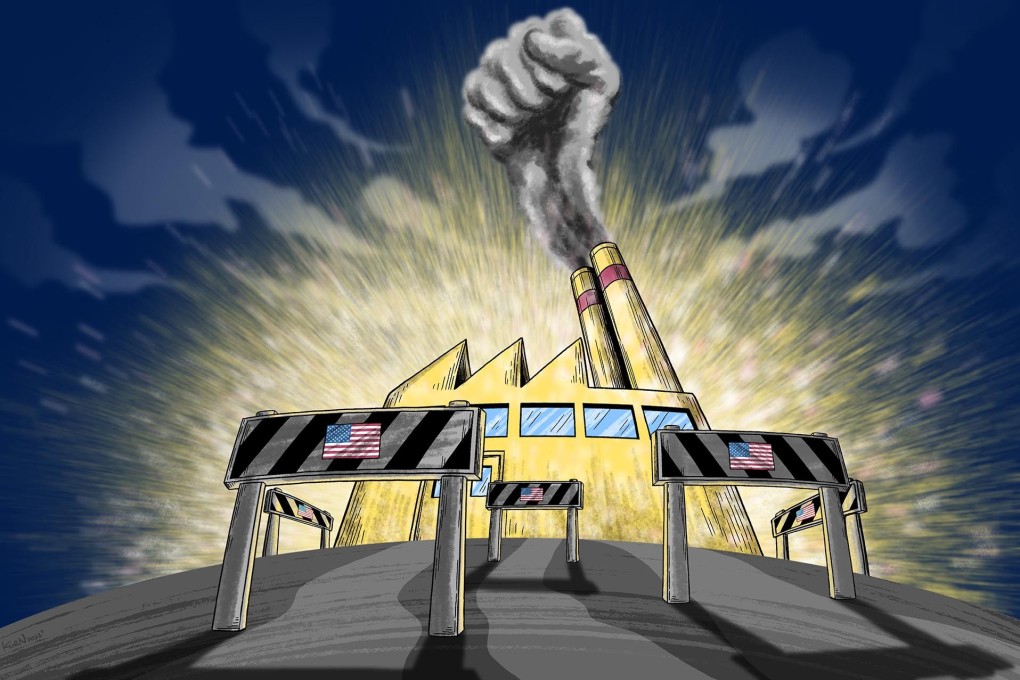How US curbs on China may revive its rust belt – the former industrial powerhouse near Russia
- The signs are so big they cannot be missed, promoting Xi Jinping’s vision for China’s technological self-reliance in the face of ‘strangling’ forces
- China’s northeast has been compared to the US city of Detroit – once a beating heart of industrialisation, now a shell of its former self with underutilised resources

On an expressway leading to the headquarters of China’s biggest maker of industrial robots, 23 huge block Chinese characters – each quite literally larger than life at over six feet tall – are a recurrent reminder to passers-by.
“It is necessary to promote self-reliance and self-improvement in science and technology, seizing every moment to make breakthroughs in ‘strangling’ problems,” reads the signage in bright red, mounted on scaffolding along the roadside in Shenyang, Liaoning province – the economic and industrial centre of northeast China.

Those were the words that President Xi Jinping uttered during a visit to the nearby Siasun Robot & Automation in August 2022, when he praised the firm – which specialises in robots used in automobile production – for “representing Chinese speed and Chinese excellence”.
Xi’s trip had come two months after a major shareholder of the robotics giant – the Shenyang Institute of Automation – was added by the US government to its export blacklist.
But even amid Washington’s heightening efforts to block China from the global hi-tech supply chain that supports the production of advanced military equipment, for China’s northeast rust-belt region, the economic opportunities could be on the rise.
“Curbs [from the United States] have inevitably impacted our supply chain, but at the same time it has also offered opportunities to develop our local industrial chain,” Wang Danqun, deputy director of the Liaoning provincial Department of Industrial and Information Technology, said in response to a Post question at a media briefing in September.
